Yikun Mei
Pre-Equalization Aided Grant-Free Massive Access in Massive MIMO System
Feb 10, 2025Abstract:The spatial diversity and multiplexing advantages of massive multi-input-multi-output (mMIMO) can significantly improve the capacity of massive non-orthogonal multiple access (NOMA) in machine type communications. However, state-of-the-art grant-free massive NOMA schemes for mMIMO systems require accurate estimation of random access channels to perform activity detection and the following coherent data demodulation, which suffers from excessive pilot overhead and access latency. To address this, we propose a pre-equalization aided grant-free massive access scheme for mMIMO systems, where an iterative detection scheme is conceived. Specifically, the base station (BS) firstly activates one of its antennas (i.e., beacon antenna) to broadcast a beacon signal, which facilitates the user equipment (UEs) to perform downlink channel estimation and pre-equalize the uplink random access signal with respect to the channels associated with the beacon antenna. During the uplink transmission stage, the BS detects UEs' activity and data by using the proposed iterative detection algorithm, which consists of three modules: coarse data detection (DD), data-aided channel estimation (CE), and fine DD. In the proposed algorithm, the joint activity and DD is firstly performed based on the signals received by the beacon antenna. Subsequently, the DD is further refined by iteratively performing data-aided CE module and fine DD module using signals received by all BS antennas. Our simulation results demonstrate that the proposed scheme outperforms state-of-the-art mMIMO-based grant-free massive NOMA schemes with the same access latency.
Unauthorized UAV Countermeasure for Low-Altitude Economy: Joint Communications and Jamming based on MIMO Cellular Systems
Oct 31, 2024Abstract:To ensure the thriving development of low-altitude economy, countering unauthorized unmanned aerial vehicles (UAVs) is an essential task. The existing widely deployed base stations hold great potential for joint communication and jamming. In light of this, this paper investigates the joint design of beamforming to simultaneously support communication with legitimate users and countermeasure against unauthorized UAVs based on dual-functional multiple-input multiple-output (MIMO) cellular systems. We first formulate a joint communication and jamming (JCJ) problem, relaxing it through semi-definite relaxation (SDR) to obtain a tractable semi-definite programming (SDP) problem, with SDR providing an essential step toward simplifying the complex JCJ design. Although the solution to the relaxed SDP problem cannot directly solve the original problem, it offers valuable insights for further refinement. Therefore, we design a novel constraint specifically tailored to the structure of the SDP problem, ensuring that the solution adheres to the rank-1 constraint of the original problem. Finally, we validate effectiveness of the proposed JCJ scheme through extensive simulations. Simulation codes are provided to reproduce the results in this paper: https://github.com/LiZhuoRan0. The results confirm that the proposed JCJ scheme can operate effectively when the total number of legitimate users and unauthorized UAVs exceeds the number of antennas.
Near-Space Communications: The Last Piece of 6G Space-Air-Ground-Sea Integrated Network Puzzle
Dec 30, 2023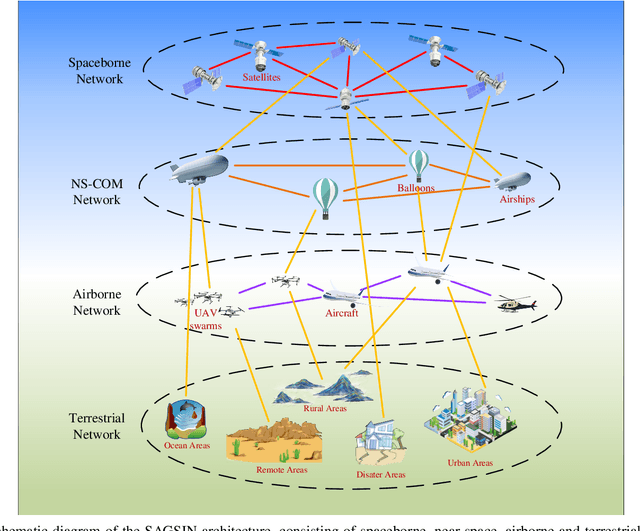
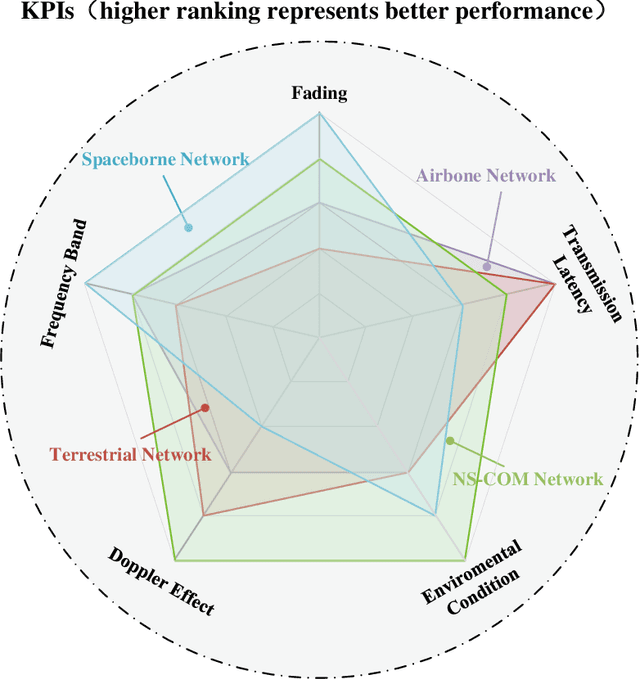
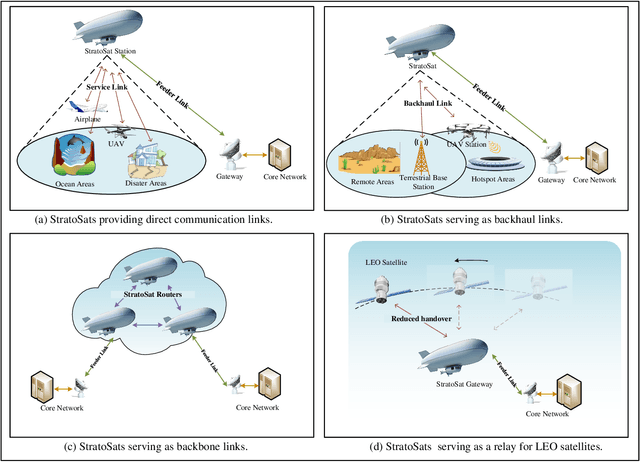
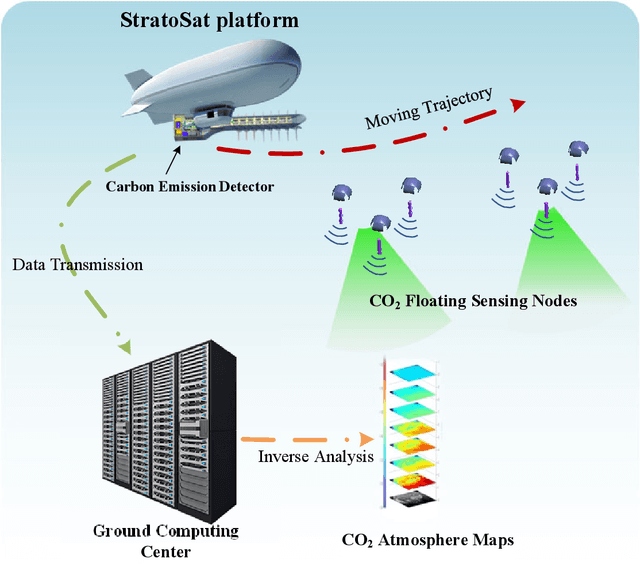
Abstract:This article presents a comprehensive study on the emerging near-space communications (NS-COM) within the context of space-air-ground-sea integrated network (SAGSIN). Specifically, we firstly explore the recent technical developments of NS-COM, followed by the discussions about motivations behind integrating NS-COM into SAGSIN. To further demonstrate the necessity of NS-COM, a comparative analysis between the NS-COM network and other counterparts in SAGSIN is conducted, covering aspects of deployment, coverage and channel characteristics. Afterwards, the technical aspects of NS-COM, including channel modeling, random access, channel estimation, array-based beam management and joint network optimization, are examined in detail. Furthermore, we explore the potential applications of NS-COM, such as structural expansion in SAGSIN communications, remote and urgent communications, weather monitoring and carbon neutrality. Finally, some promising research avenues are identified, including near-space-ground direct links, reconfigurable multiple input multiple output (MIMO) array, federated learning assisted NS-COM, maritime communication and free space optical (FSO) communication. Overall, this paper highlights that the NS-COM plays an indispensable role in the SAGSIN puzzle, providing substantial performance and coverage enhancement to the traditional SAGSIN architecture.
Compressive Sensing-Based Grant-Free Massive Access for 6G Massive Communication
Nov 12, 2023Abstract:The advent of the sixth-generation (6G) of wireless communications has given rise to the necessity to connect vast quantities of heterogeneous wireless devices, which requires advanced system capabilities far beyond existing network architectures. In particular, such massive communication has been recognized as a prime driver that can empower the 6G vision of future ubiquitous connectivity, supporting Internet of Human-Machine-Things for which massive access is critical. This paper surveys the most recent advances toward massive access in both academic and industry communities, focusing primarily on the promising compressive sensing-based grant-free massive access paradigm. We first specify the limitations of existing random access schemes and reveal that the practical implementation of massive communication relies on a dramatically different random access paradigm from the current ones mainly designed for human-centric communications. Then, a compressive sensing-based grant-free massive access roadmap is presented, where the evolutions from single-antenna to large-scale antenna array-based base stations, from single-station to cooperative massive multiple-input multiple-output systems, and from unsourced to sourced random access scenarios are detailed. Finally, we discuss the key challenges and open issues to shed light on the potential future research directions of grant-free massive access.
Massive Access in Extra Large-Scale MIMO with Mixed-ADC over Near Field Channels
Jul 05, 2022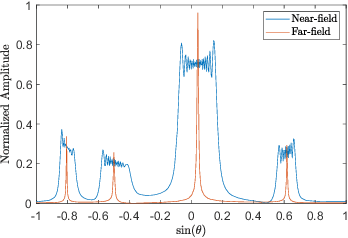

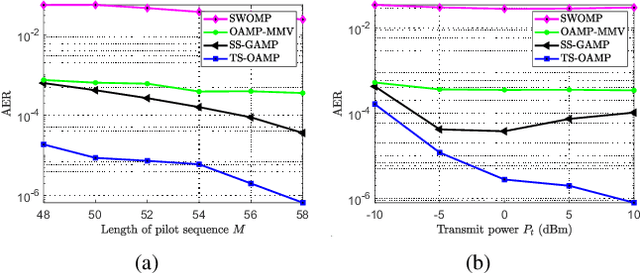
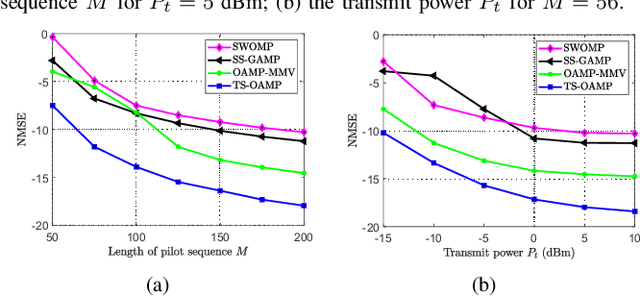
Abstract:Massive connectivity for extra-large multi-input multi-output (XL-MIMO) systems is a challenging issue due to the prohibitive cost and the near-field non-stationary channels. In this paper, we propose an uplink grant-free massive access scheme for XL-MIMO systems, in which a mixed-analog-to-digital converters (ADC) architecture is adopted to strike the right balance between access performance and energy cost. By exploiting the spatial-domain structured sparsity and the piecewise angular-domain cluster sparsity of massive access channels, a compressive sensing (CS)-based two-stage orthogonal approximate message passing algorithm is proposed to efficiently solve the joint activity detection and channel estimation problem. Particularly, high-precision quantized measurements are leveraged to perform accurate hyper-parameter estimation, thereby facilitating the activity detection. Moreover, we adopt subarray-wise estimation strategy to overcome the severe angular-domain energy dispersion problem which is caused by the spatial non-stationarity of near-field XL-MIMO channels. Simulation results verify the superiority of our proposed algorithm over state-of-the-art CS algorithms for massive access based on XL-MIMO with mixed-ADC architectures.
CS-Based CSIT Estimation for Downlink Pilot Decontamination in Multi-Cell FDD Massive MIMO
Aug 23, 2021


Abstract:Efficient channel state information at transmitter (CSIT) for frequency division duplex (FDD) massive MIMO can facilitate its backward compatibility with existing FDD cellular networks. To date, several CSIT estimation schemes have been proposed for FDD single-cell massive MIMO systems, but they fail to consider inter-cell-interference (ICI) and suffer from downlink pilot contamination in multi-cell scenario. To solve this problem, this paper proposes a compressive sensing (CS)-based CSIT estimation scheme to combat ICI in FDD multi-cell massive MIMO systems. Specifically, angle-domain massive MIMO channels exhibit the common sparsity over different subcarriers, and such sparsity is partially shared by adjacent users. By exploiting these sparsity properties, we design the pilot signal and the associated channel estimation algorithm under the framework of CS theory, where the channels associated with multiple adjacent BSs can be reliably estimated with low training overhead for downlink pilot decontamination. Simulation results verify the good downlink pilot decontamination performance of the proposed solution compared to its conventional counterparts in multi-cell FDD massive MIMO.
 Add to Chrome
Add to Chrome Add to Firefox
Add to Firefox Add to Edge
Add to Edge